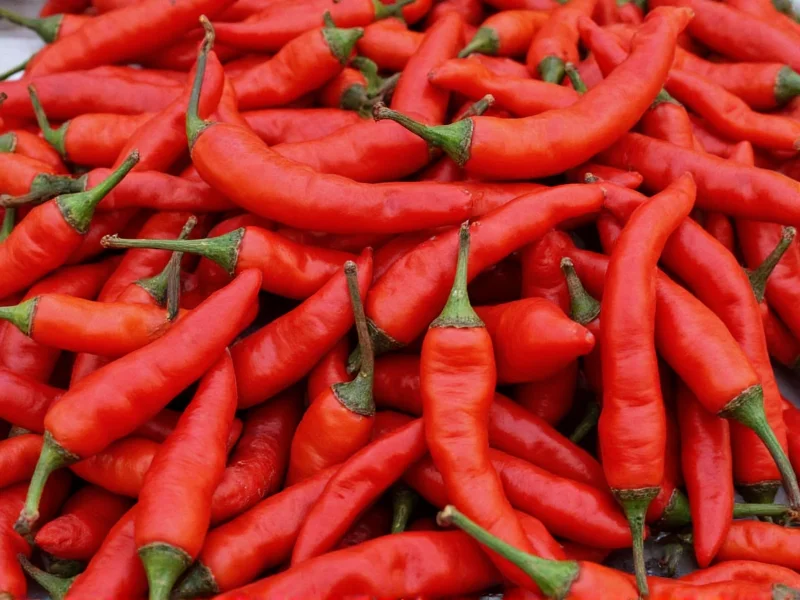Understanding chipotle pepper heat requires knowing what they actually are. Chipotles aren't a separate pepper variety but rather smoked and dried jalapeños. The smoking process gives them their signature earthy, smoky flavor while preserving the jalapeño's natural heat profile. This transformation creates a complex chili that balances moderate spiciness with deep flavor notes.
What Determines Chipotle Pepper Heat Levels
Several factors influence how hot your chipotle peppers will be:
- Natural jalapeño variation – Even before smoking, jalapeños naturally range from 2,500-8,000 SHU
- Ripeness at harvest – Riper red jalapeños tend to be hotter than greener ones
- Smoking duration – Longer smoke times can concentrate capsaicin (the compound that creates heat)
- Individual pepper differences – Like all chilies, heat varies between plants and even between peppers on the same plant
Chipotle Heat Compared to Other Popular Peppers
| Pepper Type | Scoville Heat Units | Heat Comparison to Chipotle |
|---|---|---|
| Chipotle Pepper | 2,500-8,000 SHU | Baseline |
| Jalapeño (fresh) | 2,500-8,000 SHU | Same heat level |
| Serrano | 10,000-23,000 SHU | 2-3x hotter |
| Habanero | 100,000-350,000 SHU | 15-40x hotter |
| Poblano | 1,000-2,000 SHU | Milder |
| Chipotle Powder | 5,000-10,000 SHU | Slightly hotter due to concentration |
Why Chipotle Heat Feels Different Than Fresh Jalapeños
Though chipotles and jalapeños share the same Scoville range, many people perceive chipotles as having a different heat quality. This difference comes from:
- Smoke infusion – The smoking process creates compounds that interact with capsaicin, altering how we perceive the heat
- Dehydration effect – Removing moisture concentrates flavors and heat compounds
- Flavor complexity – The smoky, earthy notes balance the heat sensation, making it feel less sharp than fresh jalapeños
- Delayed heat onset – Chipotle heat often builds more gradually compared to the immediate punch of fresh jalapeños
Managing Chipotle Pepper Heat in Cooking
Whether using canned chipotles in adobo sauce, dried whole chipotles, or chipotle powder, these practical tips help control heat levels:
- Start with less – Add half a chipotle pepper or 1/4 teaspoon of powder, then taste before adding more
- Remove seeds and membranes – These contain most capsaicin; scraping them out reduces heat significantly
- Balance with dairy – Yogurt, sour cream, or cheese counteract capsaicin effectively
- Use acid to cut heat – Lime juice or vinegar can help balance intense spiciness
- Pair with sweet elements – Honey, maple syrup, or fruit preserves complement chipotle's smokiness while reducing perceived heat
Common Chipotle Pepper Misconceptions
Several misunderstandings affect how people perceive chipotle heat:
- Misconception: Chipotles are a unique pepper variety
Reality: They're simply smoked jalapeños, so their heat range matches fresh jalapeños - Misconception: All chipotles have identical heat levels
Reality: Significant variation exists between brands, batches, and even individual peppers - Misconception: Canned chipotles in adobo are milder than dried chipotles
Reality: The adobo sauce contains vinegar and spices that can enhance perceived heat - Misconception: Chipotle powder is always hotter than whole chipotles
Reality: Powder concentration varies; some brands include more seeds and membranes
Practical Applications for Different Heat Tolerances
Understanding your audience's heat tolerance helps when cooking with chipotles:
- Mild preference: Use just the adobo sauce from canned chipotles without the actual peppers
- Moderate tolerance: Start with 1-2 whole chipotles per recipe serving 4-6 people
- High heat tolerance: Include seeds and membranes, or add chipotle powder for extra kick
- For children: Use chipotle powder sparingly (1/8 teaspoon) or substitute smoked paprika for flavor without heat
Measuring Chipotle Heat Accurately
While the Scoville scale provides a general reference, actual heat perception varies based on several factors:
- Individual biology – Genetics affect how we perceive capsaicin; some people naturally taste more heat
- Food matrix – Fats and sugars in dishes can bind to capsaicin, reducing perceived heat
- Temperature – Hotter foods increase capsaicin release, making dishes seem spicier when served hot
- Acidity – Lower pH foods (like tomatoes) can intensify heat perception
For the most accurate assessment of chipotle heat in your cooking, always taste as you go. Start conservatively—you can always add more heat, but you can't remove it once incorporated.
How does chipotle heat compare to regular jalapeños?
Chipotle peppers have identical heat levels to the jalapeños from which they're made, ranging from 2,500-8,000 Scoville units. The smoking process doesn't increase heat but does change how we perceive it, often making chipotles feel less sharp and more complex than fresh jalapeños.
Why do some chipotle peppers seem hotter than others?
Natural variation in jalapeño plants causes heat differences. Factors like growing conditions, ripeness at harvest, and individual pepper characteristics all contribute to varying heat levels. Even within the same batch of chipotles, you'll find some noticeably hotter than others.
Does chipotle powder have the same heat level as whole chipotles?
Chipotle powder often tests slightly hotter (5,000-10,000 SHU) than whole chipotles because the dehydration and grinding process concentrates capsaicin. Additionally, some manufacturers include more seeds and membranes in their powder, which contain higher capsaicin concentrations.
How can I reduce chipotle heat in a dish that's too spicy?
To reduce excessive chipotle heat, add dairy products like sour cream or yogurt, which contain casein that binds to capsaicin. Acidic elements like lime juice can also help balance heat, as can sweet components like honey or fruit preserves. Adding volume with more non-spicy ingredients dilutes the overall heat concentration.
Are canned chipotles in adobo sauce hotter than dried chipotles?
Canned chipotles in adobo aren't inherently hotter, but the vinegar and spices in the adobo sauce can enhance heat perception. The moisture content also allows heat to distribute more evenly in dishes. Dried chipotles require rehydration, which gives you more control over final heat concentration in your recipe.











 浙公网安备
33010002000092号
浙公网安备
33010002000092号 浙B2-20120091-4
浙B2-20120091-4